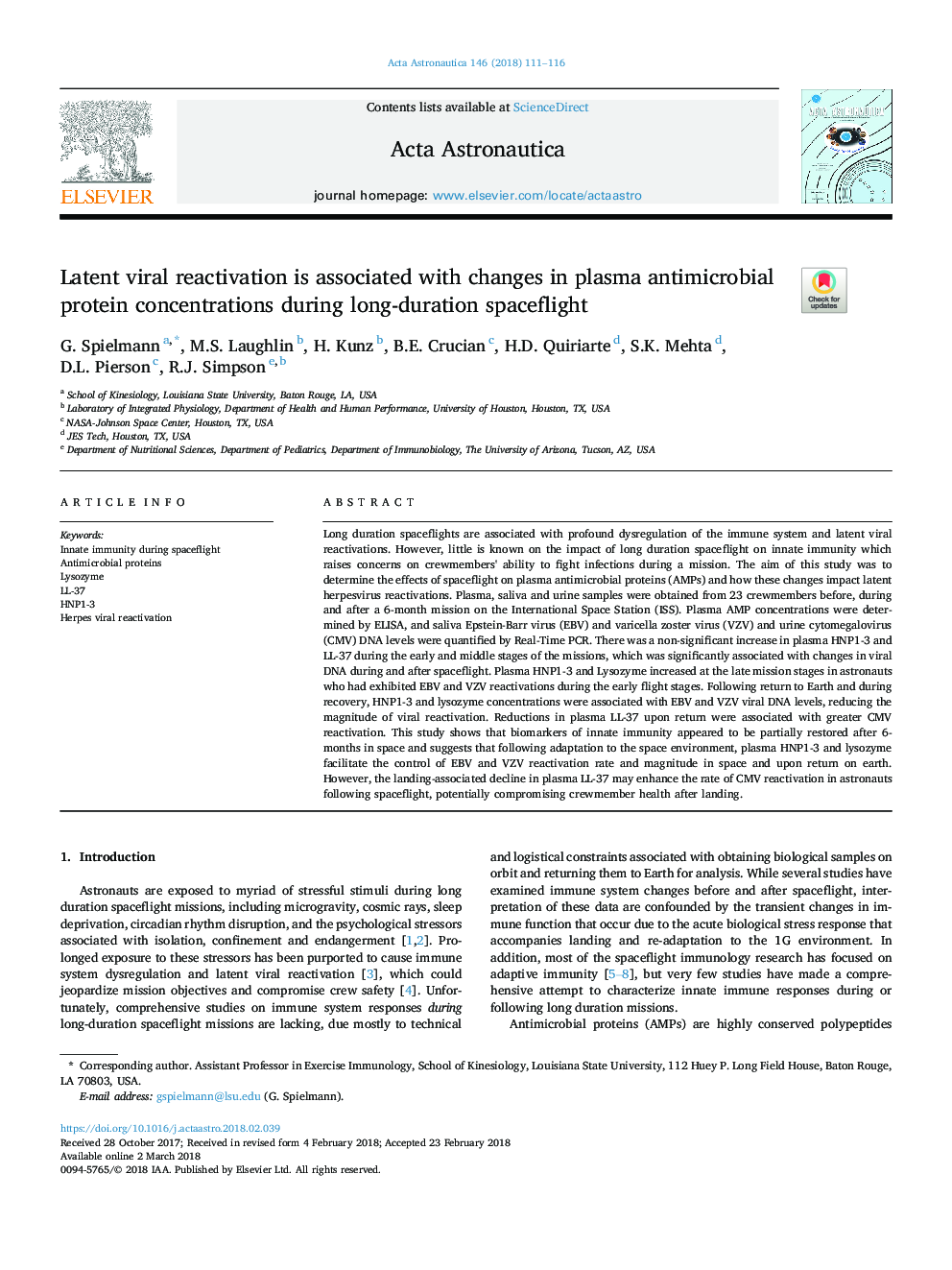| کد مقاله | کد نشریه | سال انتشار | مقاله انگلیسی | نسخه تمام متن |
|---|---|---|---|---|
| 8055580 | 1519908 | 2018 | 6 صفحه PDF | دانلود رایگان |
عنوان انگلیسی مقاله ISI
Latent viral reactivation is associated with changes in plasma antimicrobial protein concentrations during long-duration spaceflight
ترجمه فارسی عنوان
فعال سازی مجدد ویروسی بسته با تغییرات غلظت پروتئین ضد میکروبی پلاسما در فضای پرواز طولانی مدت مرتبط است
دانلود مقاله + سفارش ترجمه
دانلود مقاله ISI انگلیسی
رایگان برای ایرانیان
موضوعات مرتبط
مهندسی و علوم پایه
سایر رشته های مهندسی
مهندسی هوافضا
چکیده انگلیسی
Long duration spaceflights are associated with profound dysregulation of the immune system and latent viral reactivations. However, little is known on the impact of long duration spaceflight on innate immunity which raises concerns on crewmembers' ability to fight infections during a mission. The aim of this study was to determine the effects of spaceflight on plasma antimicrobial proteins (AMPs) and how these changes impact latent herpesvirus reactivations. Plasma, saliva and urine samples were obtained from 23 crewmembers before, during and after a 6-month mission on the International Space Station (ISS). Plasma AMP concentrations were determined by ELISA, and saliva Epstein-Barr virus (EBV) and varicella zoster virus (VZV) and urine cytomegalovirus (CMV) DNA levels were quantified by Real-Time PCR. There was a non-significant increase in plasma HNP1-3 and LL-37 during the early and middle stages of the missions, which was significantly associated with changes in viral DNA during and after spaceflight. Plasma HNP1-3 and Lysozyme increased at the late mission stages in astronauts who had exhibited EBV and VZV reactivations during the early flight stages. Following return to Earth and during recovery, HNP1-3 and lysozyme concentrations were associated with EBV and VZV viral DNA levels, reducing the magnitude of viral reactivation. Reductions in plasma LL-37 upon return were associated with greater CMV reactivation. This study shows that biomarkers of innate immunity appeared to be partially restored after 6-months in space and suggests that following adaptation to the space environment, plasma HNP1-3 and lysozyme facilitate the control of EBV and VZV reactivation rate and magnitude in space and upon return on earth. However, the landing-associated decline in plasma LL-37 may enhance the rate of CMV reactivation in astronauts following spaceflight, potentially compromising crewmember health after landing.
ناشر
Database: Elsevier - ScienceDirect (ساینس دایرکت)
Journal: Acta Astronautica - Volume 146, May 2018, Pages 111-116
Journal: Acta Astronautica - Volume 146, May 2018, Pages 111-116
نویسندگان
G. Spielmann, M.S. Laughlin, H. Kunz, B.E. Crucian, H.D. Quiriarte, S.K. Mehta, D.L. Pierson, R.J. Simpson,
